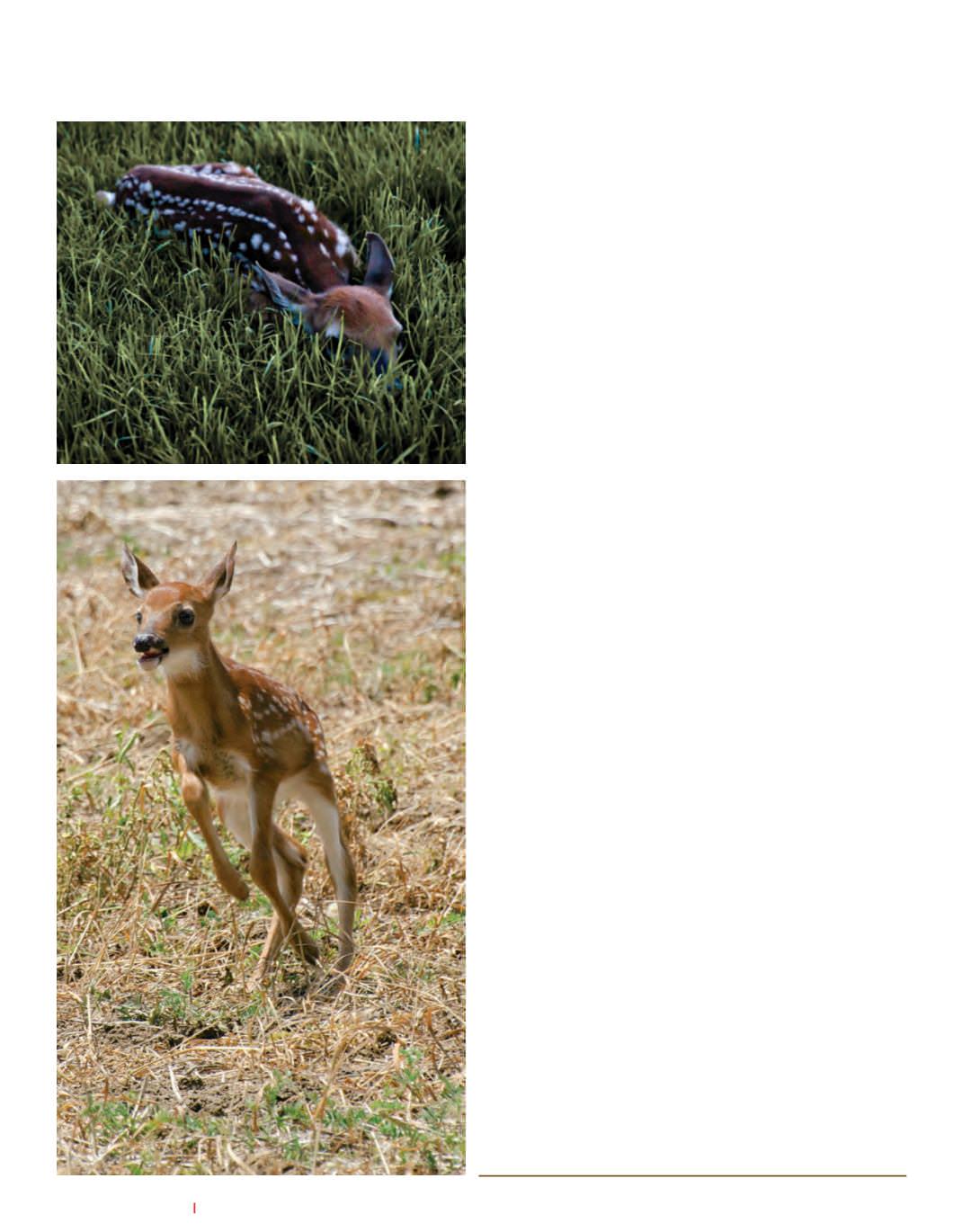
106
Escarpment Magazine Harvest & Holiday 2013
Breeding...
Deer reproduce quickly. A healthy herd is capable of almost
doubling its numbers during one favourable year. Under favourable con-
ditions, female fawns tend to breed at six to seven months and at 12
months of age produce singletons, or one baby. Male fawns and male
yearlings are sexually mature but are seldom given a chance to breed.
The white-tailed deer’s spotted, wobbly legged fawns, weighing 2 to 4
kg at birth, are born in late spring. Although birth may take place from
late March to early August, most fawns are born during the last week of
May or the first week of June. On high quality range twin fawns are the
rule, although single births are quite common among younger females,
especially those giving birth for the first time. Triplets are relatively uncom-
mon and quadruplets occur only rarely. On poorer ranges or after a se-
vere winter single births usually outnumber double births and multiple
births do not occur.
The newborn fawn can get to its feet within minutes, and very soon takes
its first nourishment from the doe’s rich milk; however, it remains relatively
feeble during the first week or so of its life. As the fawn grows stronger it
begins to follow the mother about during her feeding and soon learns to
supplement its milk diet by nibbling on succulent vegetation. The doe,
meantime, like other adult members of the deer herd, has been feeding
steadily on new spring vegetation. She has entered the spring period in
lean condition and with a shabby, tattered winter coat. Gradually the
coarse grey winter coat is replaced by the fine reddish summer coat. Im-
proved food supply results in both doe and fawn becoming sleek and
sturdy by midsummer.
In the early spring the antlers of the male begin to show as twin dark pro-
trusions from the frontal bones of the head. Growth of the antlers and re-
gaining of body weight continue rapidly through the late spring and early
summer. Antlers are true bones and during growth have both an internal
supply of blood through the pedicels, or branches, and an external sup-
ply in the hairy skin covering of the velvet. In late summer during ad-
vanced growth the antlers appear bulbous and distended under the
velvet. The shortening days of late summer terminate growth of the antlers.
The velvet dries and begins to peel off, revealing the hard bony tissue be-
neath. Bucks rub their antlers against brush and small trees to speed this
process. The antlers are usually shed in January although shedding may
occur from December through March.
White-tailed deer are truly magnificent specimens in the early autumn.
Their bodies are rounded out by reserves of fat stored for the lean months
ahead. The new thick winter coat exaggerates the thickness and sturdi-
ness of the body. Fawns have lost their spots and are now short-faced,
smaller replicas of their parents.
Most of the breeding occurs during the last three weeks of November al-
though some fawns and yearlings breed in December and, rarely, into
January. The peak of the rut, or period of male sexual activity, occurs dur-
ing the last two weeks in November in Canada but is more variable in
the southern U.S. Bucks with swollen necks, caused by hormones associ-
ated with the rut, travel almost incessantly, searching out the does and
engaging in mock battles with their rivals. Sometimes a real battle devel-
ops, and occasionally the antlers of the combatants become hopelessly
entangled, leaving both to die slowly.
*
ESCARPMENT NATURE FEATURE
|
living with white-tails
Photos | Clay Dolan


